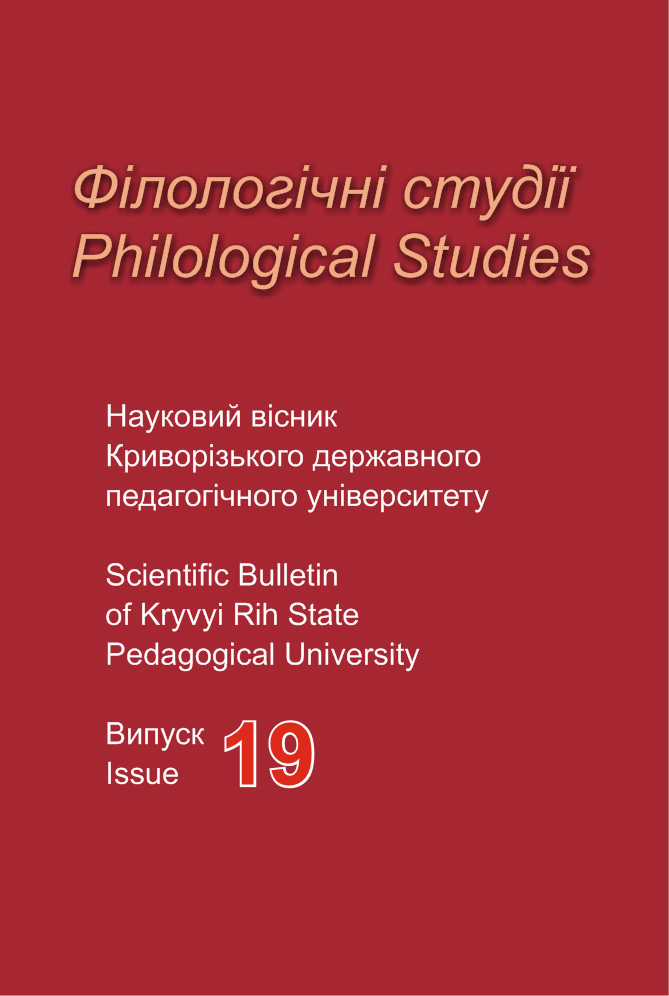Parameters of Ukrainian Culinary Sites: Socio-Communicative Situation, Communicative Purpose, Concepts of Narrator and Narratee
DOI:
https://doi.org/10.31812/filstd.v19i0.2325Keywords:
culinary site, speech genre, communicative purpose, narrator, narrateeAbstract
The article deals with some pragmatic parameters of Ukrainian-language culinary site as a special genre in the communicative space of Internet. It is a specific electronic dynamic cookbook existing in the socio-communicative situation of the transfer (dissemination) of experience. The communicative purpose of the culinary sites is through the selection and presentation of recipes relaying culinary experience, attracting a wide range of recipients to culinary art, forming a positive evaluative attitude to food and cooking as an important part of social and cultural life of the person. Authors of culinary sites are keen to encourage recipients to culinary experimentation, promote the idea of healthy homemade food and nutrition.
The generalized images of a narrator (author) and narratee (recipient) of Ukrainian culinary sites are described. The typical author is not a professional cook or shef, but an experienced mistress who shares her experiences and secrets of home cooking, recipes of dishes, personally tested and proven. Home cooking is presented as an important factor in a happy family life, joy and pleasant emotions.
It has been found that culinary sites are intended for a wide range of recipients, but the main target audience is women. There are two main groups of narratees. The first group contains experienced cooking lovers, amateur cooks tending to vary their daily meals, expand their culinary experience. The second one consists of novices, beginners who want to learn how to cook delicious dishes – quick and easy to prepare – at home.
Metrics
References
Варипаєв О.М. Філософія їжі: концептуальні підходи до осмислення феномену Економічна стратегія і перспективи розвитку сфери торгівлі та послуг. Харків, 2012. Вип.1(2). С. 319–325.
Горошко Е.И, Жигалина Е.А. Виртуальное жанроведение: устоявшееся и спорное. Вопросы психолингвистики. 2010. No12. С.105–123.
Горошко Е.И., Полякова Т.Л. К построению типологии жанров социальных медий. Жанры речи. 2015. No2(12). С.119–127.
Леви-Стросс К. Мифологики: в 4 т. Москва; Санкт-Петербург: Культурная инициатива ;Университетская книга, 2000.Т.1: Сырое и приготовленное / пер. З.А. Сокулер, К.З. Акопян. 406 с.
Марковська М. Пані Стефа –про галицьку кухню, смакові спогади та ритуали. Українська правда. 2018. 12серпня. URL: https://life.pravda.com.ua/society/2018/08/12/232637/ (дата звернення:10.03.2019)
Матвєєва С.А. Сайт як жанр Інтернет-комунікації (на матеріалі персональних сайтів учених) : автореф. дис. ... канд. філол. наук : 10.02.15 / Донецький національний університет. Донецьк, 2006. 19с.
Ніколенко В.В. Гастрономічнідетермінанти суспільного життя: соціологічний вимір: дис. ... д-ра соцiол. наук : 22.00.01 / Дніпропетровський національний університет імені Олеся Гончара. Дніпропетровськ, 2015. 441с.
Савчук Є.О. Мовні жанри у Всесвітній павутині: методологічні основи класифікації. Компаративні дослідження слов’янських мов і літератур. Київ, 2010. Вип.12. С.160–169.
Словник української мови : в 11 т. / АН Української РСР, Ін-т мовознав. ім. О.О. Потебні ; редкол.: І. К. Білодід (голова) [та ін.].Т.9: С/ ред. тому: І.С. Назарова [та ін.].Київ: Наук. думка, 1978. 916 c.
Яценко С.А. Традиційна народна їжа як предмет етнографічного дослідження. Вісник Житомирського державного університету ім. І.Франка. 2006. Вип. 28. С. 233–236.






